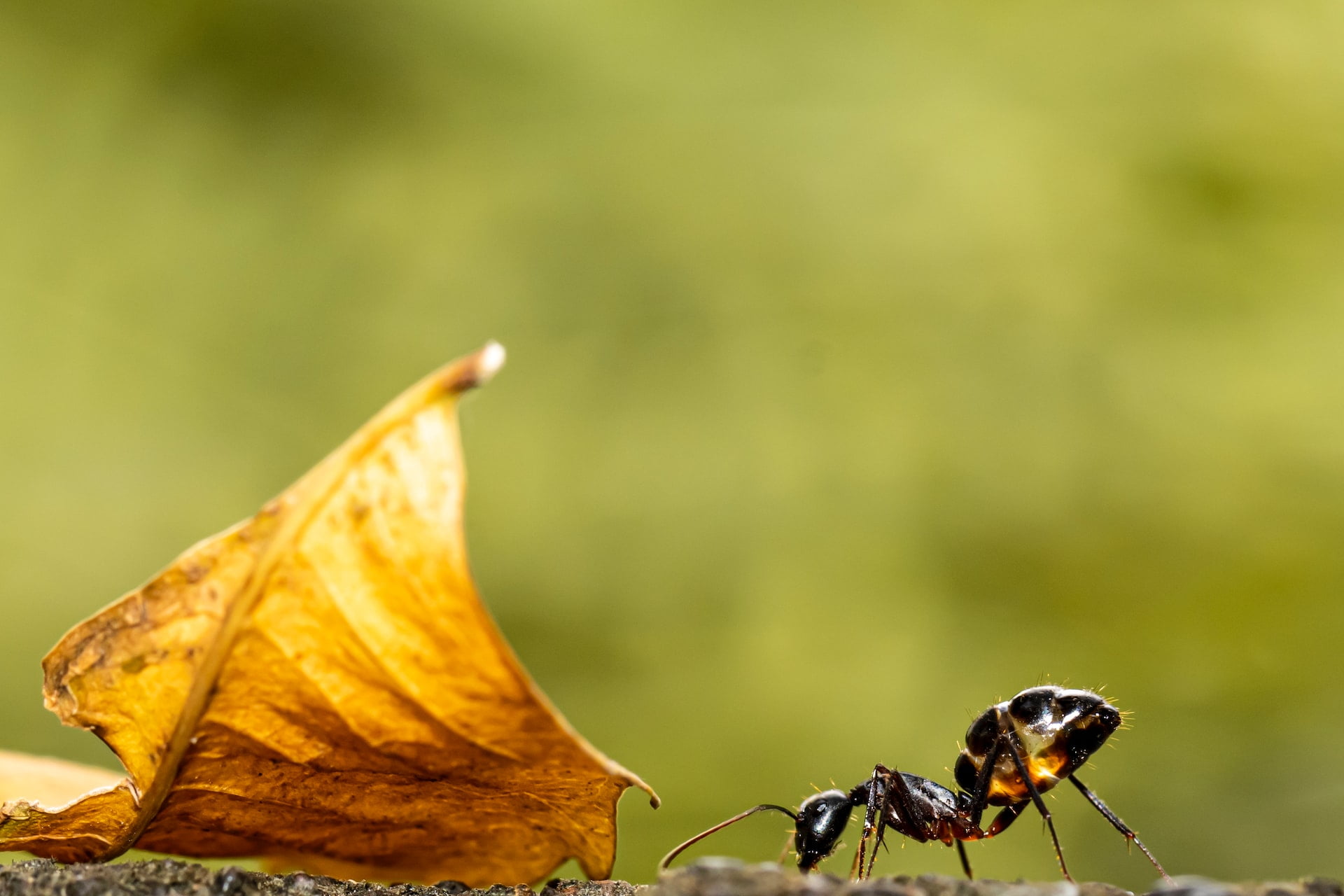A carpenter ant invasion in a home can be disastrous. These insects attack wooden structures, which tends to weaken the whole house. In Canada, this is a real threat that must be taken seriously. Find out everything you need to know about carpenter ants, how to detect their presence in your home and how to eradicate them from your home.
What are carpenter ants?
In Canada, two species of carpenter ants predominate, the red carpenter ant and the black carpenter ant. The first has a blackish body and the thorax red or brown. The second one is entirely black. Both are between 6 and 25 mm long, with arched and segmented antennae. The adults have wings during the mating period.
Carpenter ants are known to attack wooden structures. In a house, their presence can quickly become a nuisance, since in addition to causing damage to wood, they invade the kitchen in search of food. They are omnivorous and eat both plant and animal matter, and are particularly attracted to protein and sweet foods.
Carpenter ants build huge colonies in the wood. They dig galleries and throw fine sawdust-like wood chips outside. They form a large colony composed mainly of workers, reproducers and queens. Growing rapidly, a colony can quickly invade an entire house, attacking all wooden structures present.
It is important not to confuse the carpenter ant with termites. Although they look similar, termites are smaller and are rare in Canada, at least, less common than carpenter ants. Termites feed on wood, while carpenter ants only dig galleries to live in.
How to detect their presence in a house?
It is not always easy to detect the presence of carpenter ants in your home, especially if the colony is not yet very large. They slowly attack the wood from the inside and the damage they cause is not always visible at first.
Inside homes, carpenter ants are particularly fond of wood that is often damp and soft. For example, if your home has water infiltration problems, moisture-affected wood framing is most often susceptible to carpenter ant infestations.
Here are some signs that should alert you to the invasion of carpenter ants in your home:
- The presence of fine sawdust around wooden structures;
- Small holes on the wood that seem to multiply with time;
- The presence of ants in your kitchen or on food scraps lying around the house.
To detect the presence of carpenter ants, here are some tips to follow:
- Start by checking poorly ventilated wet areas with wooden structures;
- Inspect the floor around wooden structures such as furniture and framing for fine sawdust;
- If you detect ants in your home, follow their path to find out if they are entering a wooden structure, or if they are heading outside.
In what parts of the house are carpenter ants most likely to be found?
As mentioned earlier, carpenter ants particularly like moist, soft wood. Pine species are also very susceptible to their attack. The structures where they often develop are :
- Stairs;
- Wooden window frames;
- The empty spaces between the walls;
- Doors;
- Wooden furniture such as cabinets and dressers;
- Insulating panels.
There are several ways that carpenter ants enter a home. This can be in windows, cracks in the foundation, heating or cooling system ducts, electrical power cables, firewood brought into the home, and wood structures attached to the home such as porches and sheds.
How to treat a carpenter ant invasion?
To eradicate the problem of carpenter ants, you can take several steps. First, look for one or more colonies on the outside wood. Get rid of this wood right away to prevent further invasion of the house.
Then take the following steps:
- Store firewood in a room that is not in the house or connected to the building;
- Replace infested lumber and furniture;
- Get a professional to thoroughly inspect your home.
Chemicals also remain an effective solution to quickly eradicate ant colonies. However, you must be well informed before buying. Check to see if the product in question is really effective against carpenter ants. Also make sure that the product is not too dangerous for the health of the occupants of the house, especially if people are hypersensitive.
The advantage with chemicals is that they have a spreading effect. The remaining ants will feed on the remains of the ants killed by the insecticides, which will in turn contaminate and kill them.
How to prevent an invasion of carpenter ants in your home?
It is possible to prevent carpenter ants from invading your home. The steps to follow are quite simple, but require meticulousness and rigor on your part:
- Avoid storing firewood inside your home;
- Do not bury tree stumps and wood debris near your home;
- Fix your home’s waterproofing problems as soon as possible;
- Clean your home regularly, avoiding food scraps that may attract ants.
Be vigilant when buying a house
If you’re thinking of buying a home soon, be especially careful to ensure that the building is not infested with the devastating carpenter ants. If you have any doubts, turn to a specialist who will inspect the building. You will then be more serene before becoming a homeowner.

